Soil pipes and waste pipes are a vital part of any property. However, all those different pieces can be quite confusing. Find out about what these systems are and more below.
Table of contents
- What is a soil pipe?
- Soil pipe fittings
- What are soil pipes made of?
- What is a waste pipe?
- Waste pipe fittings
- What are waste pipes made of?
- What’s the difference between solvent weld and push fit?
- What is the difference between a soil stack and a waste stack?
- How to connect toilet to soil pipe
- How to connect soil pipe to a sewer
- How to unblock a soil pipe
- How to disguise an outside soil pipe
Explaining soil pipes
So what is a soil pipe? A soil pipe, also known as a soil vent pipe (SVP), is a vertical pipe that is used for the transportation of sewage into sewer systems. This could be from toilets, urinals and even bidets. It’s also known amongst some as a soil stack pipe, stink pipe or drain waste vent.
Typically, this type of pipe will carry water and solids into the sewer as part of its primary purpose to regulate pressure in the drainage system. Although other pipes can indeed perform the task, this type of pipe is designed to deal with certain materials other types might struggle with. It is why they are a crucial part of any drainage system
One key feature of the soil pipe is the vented section (including an air admittance valve), usually placed high at the top or near the top of the building, thanks to the support of soil pipe stacks. This feature allows safe ventilation of gasses produced by vents to pass through into the atmosphere.
Find out “How to use an air admittance valve” with your soil pipe system.
Safe ventilation of gasses is important as these gasses can be a health and environmental risk if not released more efficiently. So venting them high not only reduces this risk but also minimizes nasty odours and supports environmental protection.
It’s also worth noting that this is part of UK building regulations. So you will need to ensure that it meets these requirements. This leads to the next point, what size soil pipe is needed?
Soil pipe sizes
The most common size of soil pipe in the UK is 110mm when the system is above ground. An underground soil pipe size will typically be 160mm for the main flow when homes are joined together. Many of these components are also designed with these sizes in mind to specifically support suspended horizontal or vertical plastic pipework.
When connecting a toilet soil pipe, it is advised to never use a pipe smaller than 100mm to carry the waste from said toilets. This size soil pipe is not designed to handle solid waste and can result in a blockage. So 110mm soil pipe is important to consider in this instance.
See “How to install soil pipe” for further guidance, but do consider speaking to a professional if you do not have the required skills to install your system.
Below is an example range of different soil pipe sizes available, but you can also see more via our selection of soil pipes to find pipes that suit your requirements.
| Pipe material | Pipe diameter |
| Cast iron | 50mm |
| Plastic | 110mm |
| Cast iron | 150mm |
| Plastic | 160mm |
You can find out about soil pipe fittings at Drainage Superstore for more information about the products available.
How high should a soil vent pipe be?
Soil pipe height will depend on building regulations. Approved Document H outlines drainage and waste disposal building regulations in England, covering foul water drainage and disposal. The document states that the opening of ventilation pipes should be located at least 900mm above any building within three metres of the pipe. The vent will also need to be protected with a wire cage or perforated to prevent debris or birds from entering it.
Here you can see an example of the desired placement of a soil pipe to get the most out of your installation. If the soil pipe is less than 3m from a window, ensure that the vent sits at least 900mm above said window or opening. You will also need to make sure that the soil pipe sits a minimum of 200mm above the highest water entry point (aka the highest point where wastewater will reach within a soil pipe).
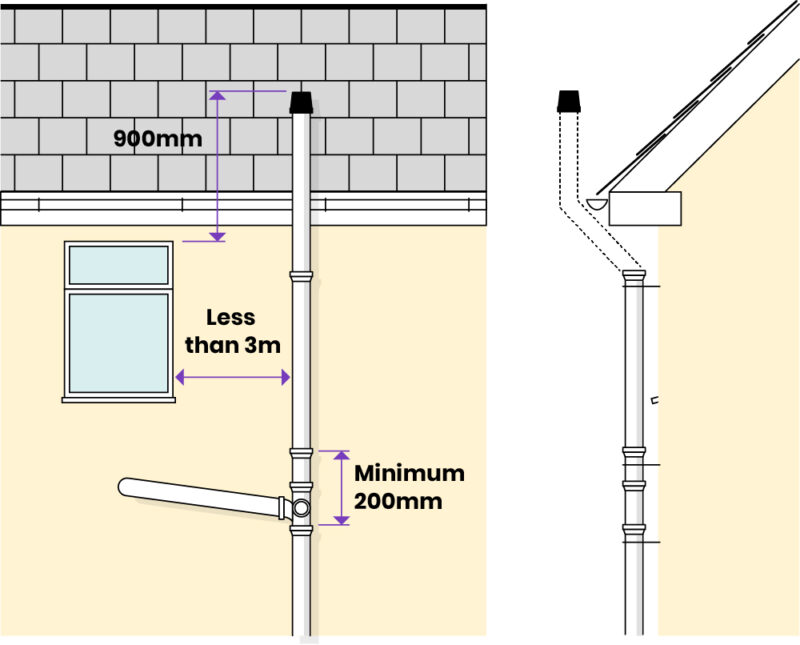
Soil pipe fittings
You will need to know the different soil pipe fittings and parts needed to complete the installation. Here is an explanation of these features.
Roof terminal
At the top of the system, we have our roof terminal (also known as a vent terminal). As mentioned previously, the vent pipe will need to be protected with a wire cage or perforated. This will help to prevent debris or birds from entering it. As such, this part of the system will fit over the exposed open end of the soil vent pipe.
Vent pipe
The vent pipe is the pipe that sits up through the roof at the top of the soil stack. This is where harmful gasses can pass through and escape into the atmosphere.
Note: An air admittance valve can be used in place of a vent pipe to allow the soil stack pipe to end inside the property if you want an internal soil vent pipe.
Weathering collar and weathering slate
A weathering collar is an additional form of protection used to divert rainwater from falling directly onto the weathering slate. Although the weathering slate typically can create a tight seal around the soil vent pipe, this added protection further improves the longevity of this part of the system when paired with the weathering collar.
Offset bend and bends
Your offset bend is available in two specific types – top and bottom. The top offset bend pieces are a ring seal socket with a solvent bottom. Bottom offset bend pieces are a solvent socket with a spigot bottom. These are used at the top of the soil stack to change the direction and are joined together using a short pipe that sits between the two solvent weld points.
Bends, on the other hand, are your standard pipes used to change the direction along the horizontal sections of a soil pipe run.
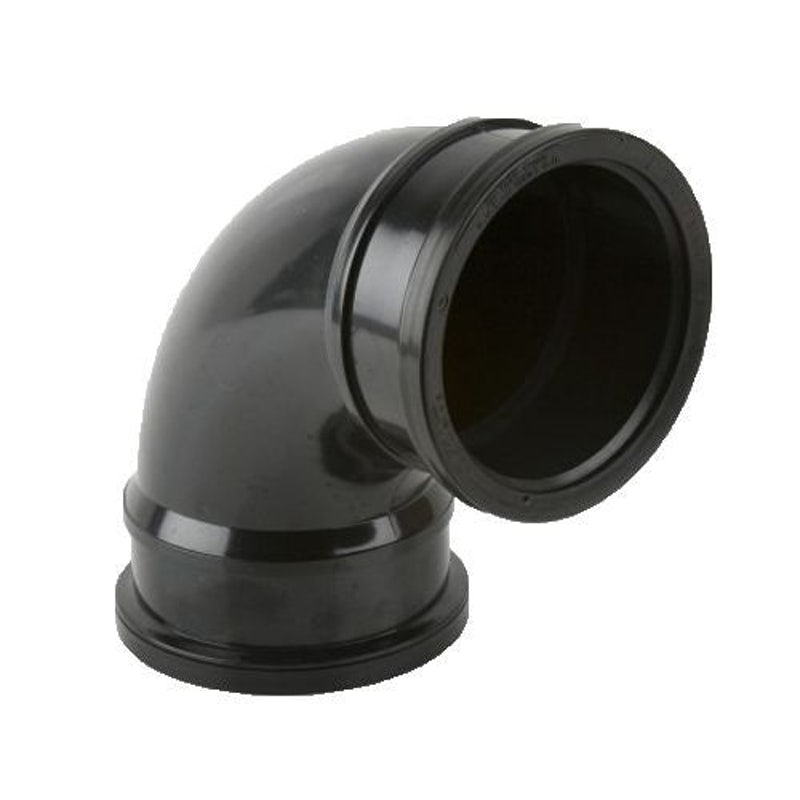
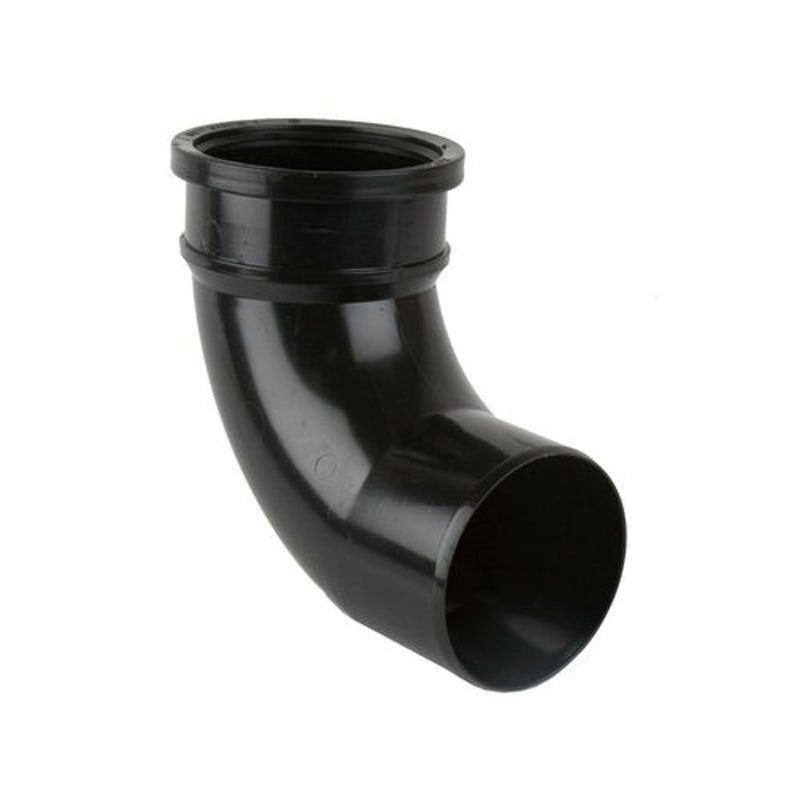
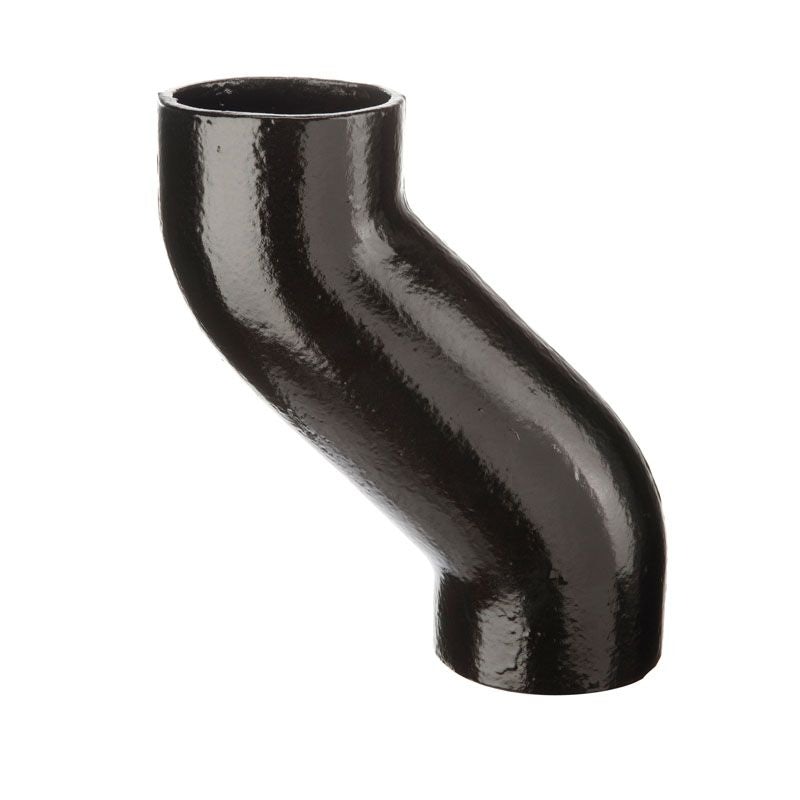
Branch and boss pipe
Branches are used to connect soil pipes from toilets, urinals and bidets to the soil stack. The boss pipe is also a connection point but is typically manufactured with multiple entry points to allow waste pipes to join the soil stack from more than one entry point.
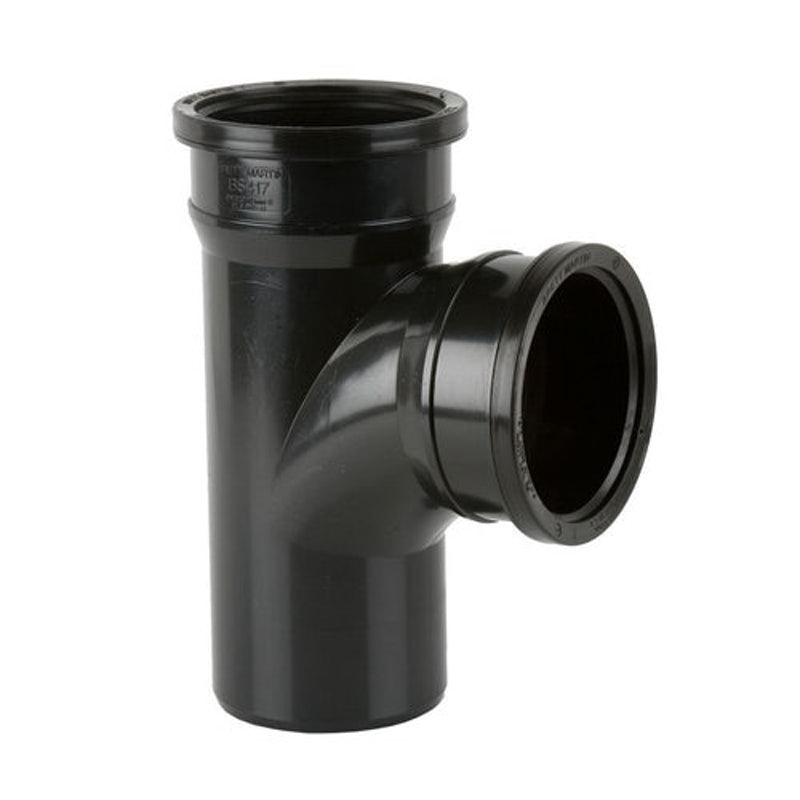
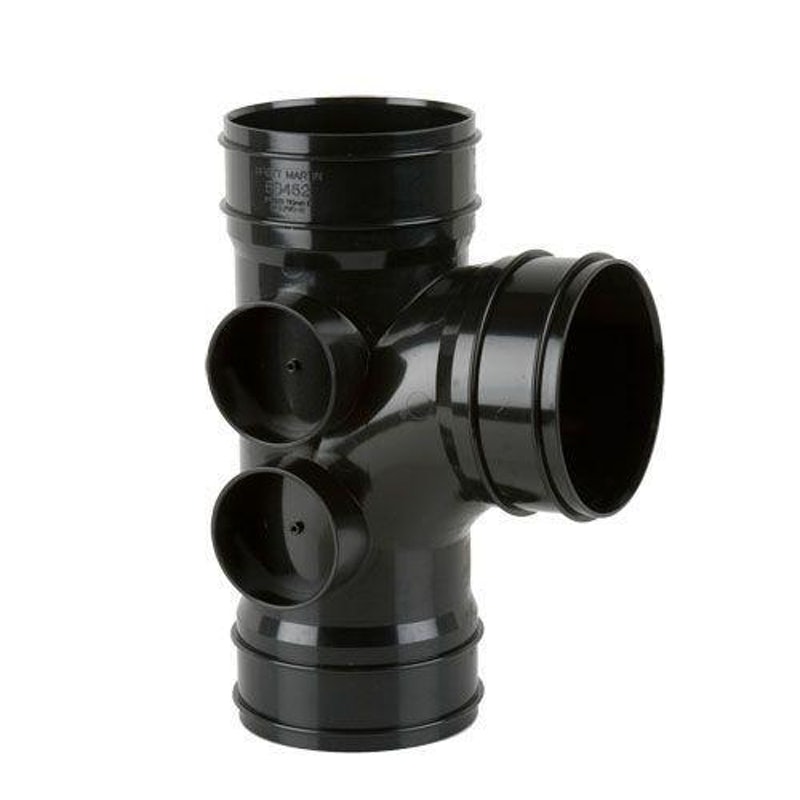
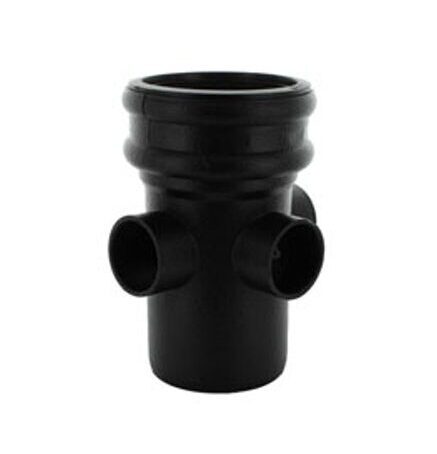
Pipe clips and socket clips
A pipe clip is used to secure the soil pipes against a wall and, as well as provide support around joints, is typically used for plain-ended pipes. Socket clips are used for the same purpose but are typically designed for socket ends.
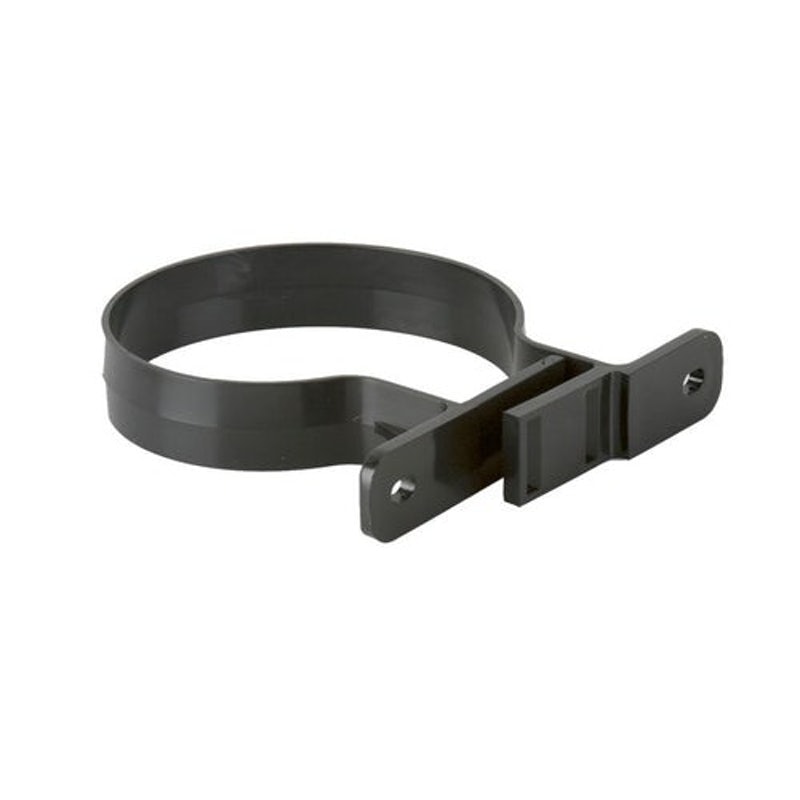
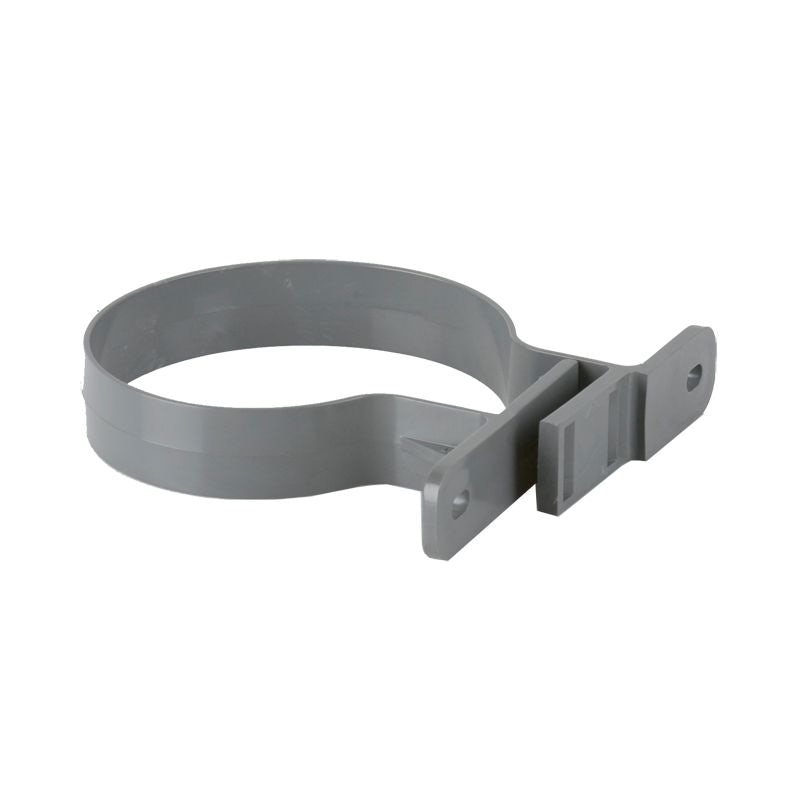
Coupling (aka slip coupling)
Couplings are designed as double or single-socketed options and are used to connect pipe lengths together.

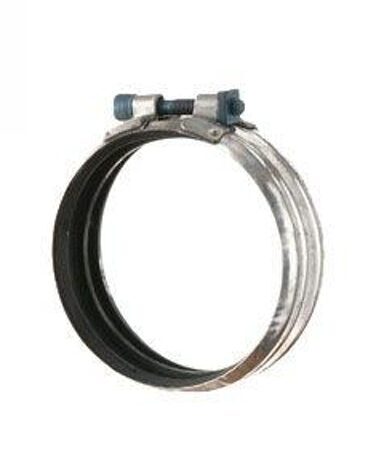
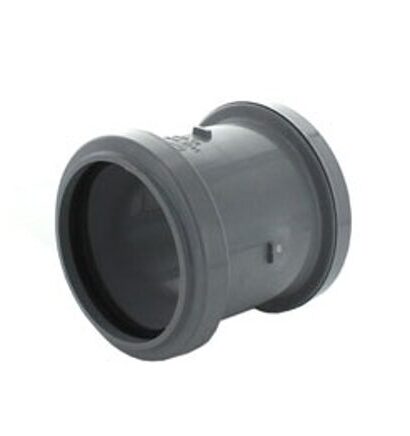
Pipe lengths
These are the standard pipes used to create a soil stack and any branching connections to the property’s bathroom facilities (toilets, urinals or bidets). You can find these, typically, available in 3m or 4m lengths. Check what lengths you need before purchase to ensure fitting is as required.
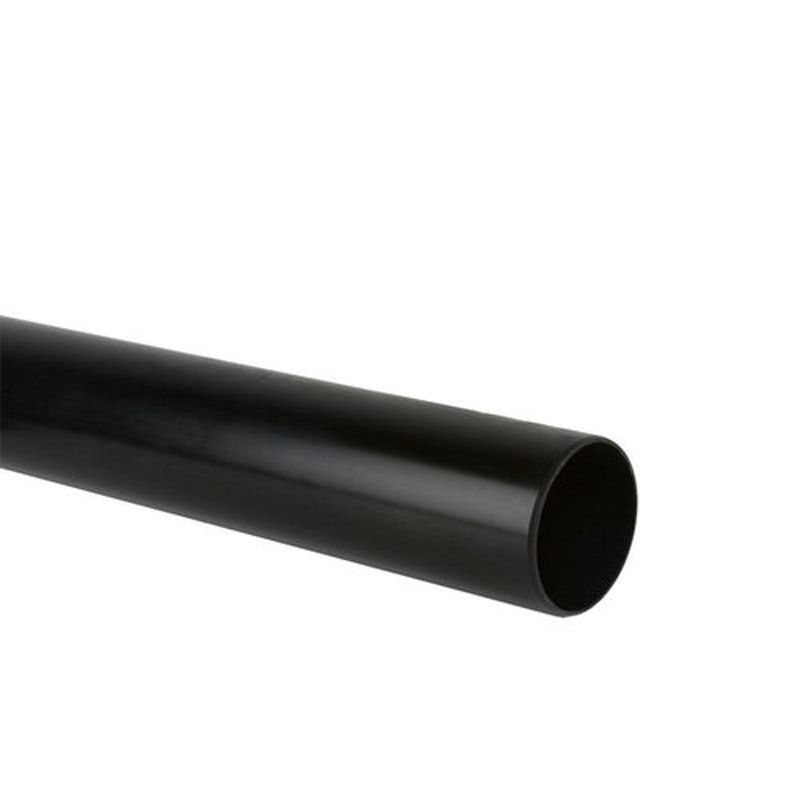
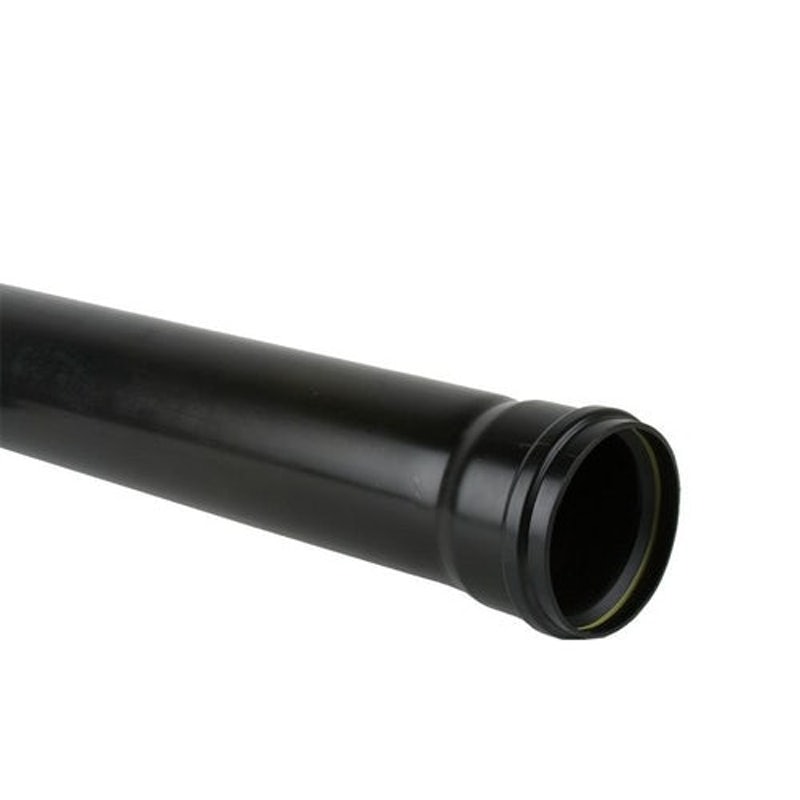
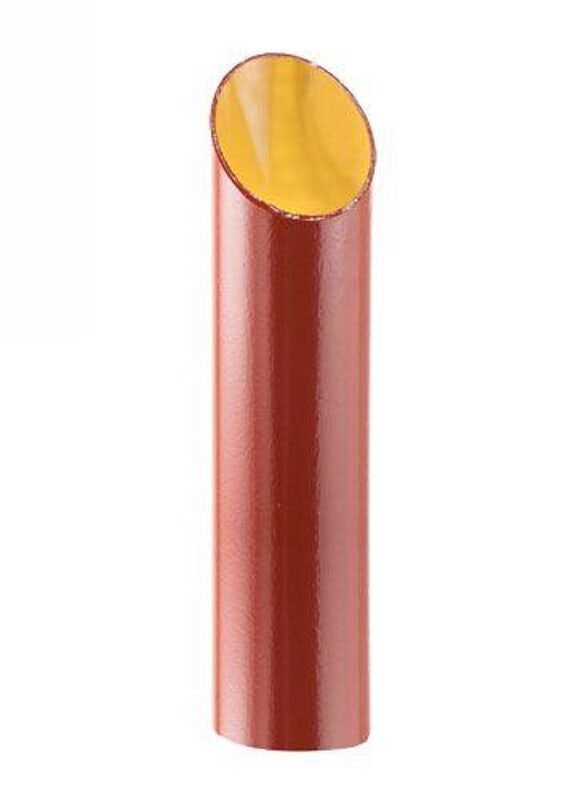
Access pipe/underground pipe
As its name suggests, an access pipe is a point of access to the soil stack. This will be required to ensure inspections, cleaning and rodding can be carried out. It can also be used as a connection point for waste pipes if you can fit boss pipes to the side.
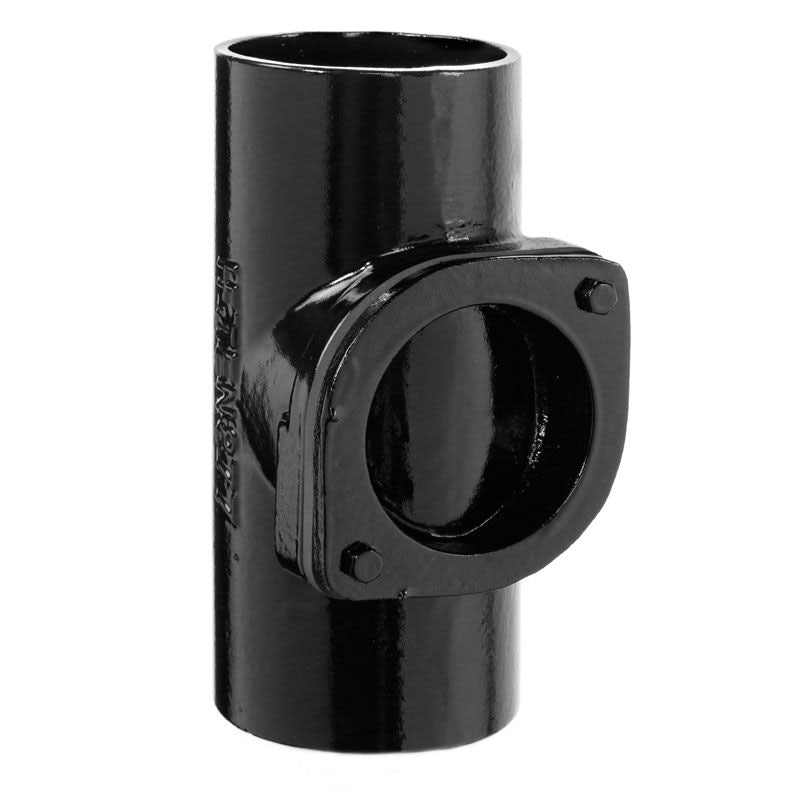
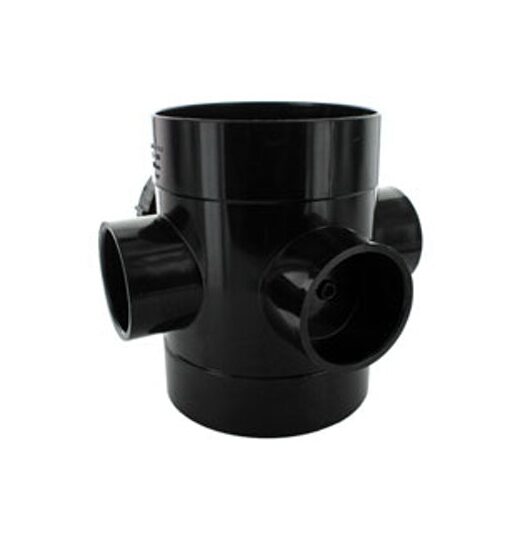
What are soil pipes made of?
Today soil pipes have expanded beyond the use of cast iron in their manufacturing and can now be found with plastic pipe and fitting solutions.
Plastic soil pipes
A plastic soil pipe is not only available in a variety of colours but also has the following attributes:
- Lightweight (reduced transportation costs and installation times)
- Smooth internal surface allows for reduced risk of materials getting stuck and causing blockages
- Flexibility
- Tough resistance to chemicals (reduced detrimental effect risk from the use of bleach and toilet cleaner)
- Longer length availability than cast iron means fewer joints needed
- Long-lasting
- Cost-efficient
The majority of uPVC soil vent pipe systems are also designed to be easily installed. Especially when it comes to compatibility with other systems. If this isn’t the case, there are conversion fittings to ensure connecting the parts to systems is made easy. Do so with caution, however, as different connections are advised not to be mixed.
Although a plastic soil vent pipe is worth the investment, speak to a professional to confirm alterations or repairs if your property does not have a cast iron soil stack installed.
However, if the property does have a cast iron soil pipe system in place then you will need to see if it contains asbestos. Older soil pipe systems are likely to have this within them. So make sure to speak to a professional to remove this if you are not fit to do so yourself.
Cast iron soil pipes
Although most modern properties opt for alternative plastic material versions, many properties old and new still have cast iron soil pipes installed. Older properties especially and particularly those built or refurbished before the year 2000. This is because, as mentioned previously, older cast iron soil stacks are at risk of containing asbestos. This will need to be removed and disposed of safely and correctly by professionals if you do not have the required skills to do so.
Nowadays, cast iron soil pipe’s main attributes are as follows:
- Long-lasting (some as long as 100+ years)
- 100% recyclable (a combination of 100% scrap and recycled metals)
- Low maintenance (at least one annual inspection advised per year)
- Heat damage resistance
- Won’t deflect under heavy loads (such as intense rain or snow)
Explaining waste pipes
So, what is a waste pipe? A waste pipe is used for carrying greywater from appliances that may have used water. This can be anything from a washing machine waste pipe to a sink waste pipe and is typically smaller in diameter. The narrowness is because the waste pipe is only designed to carry water and not hefty solids like that of a soil vent pipe.
Additionally, waste pipes do not need the same venting system as soil pipes. This is because wastewater does not usually generate harmful gasses like that of contaminated water. As such, there is no need for it to be vented high above ground level.
Having said this, if the waste system for your property runs separately from the soil system and is not connected to the soil stack, you can opt for adding ventilation if needed. However, if your system connects to the soil pipe system, this should already be ventilated.
Separate systems must be looked at to ensure that waste pipes are not at risk of contaminated water flowing through them. For example, something like a toilet waste pipe is not common. So it’s always worth checking the installed system to avoid future issues to the home and your health.
Note: Always seek professional advice if you are not sure about your system.
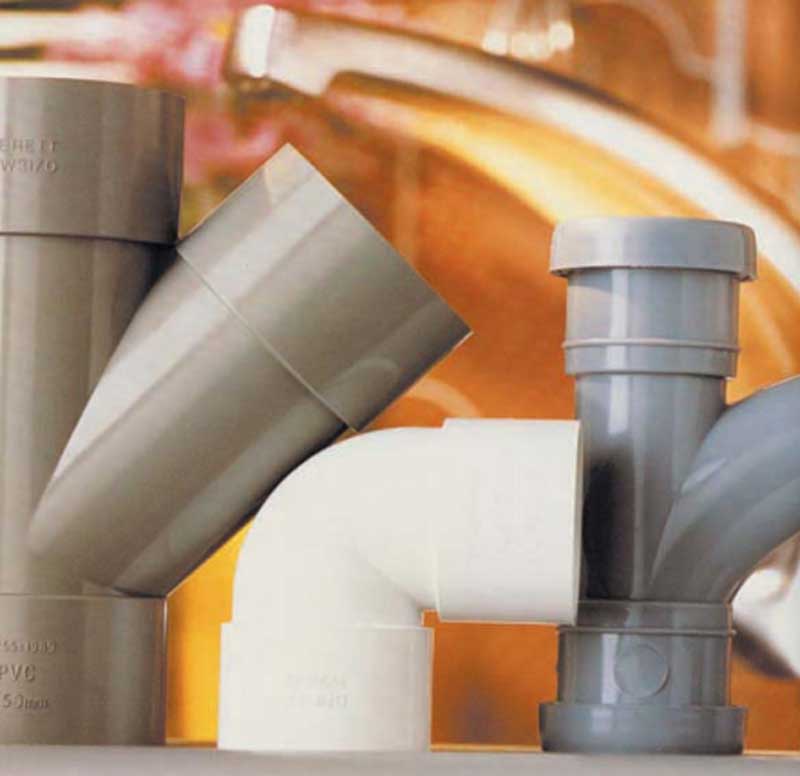
Waste pipe sizes
The most common sizes of waste pipe in the UK are 32mm, 40mm and 50mm. A 32mm waste pipe is typically used for appliances that present low volumes of water to the system (e.g. small hand basins), while 40mm is normally used for kitchen sinks, showers and baths. 50mm, on the other hand, is large to suit commercial applications or connect multiple waste pipes to a single flowing system.
As mentioned above, combined soil and waste systems will usually be ventilated already. In this case, making sure you have the correct size of pipe for the application will be your main focus. Alternatively, separate systems will need to focus on making sure contaminated water does not flow down the waste pipes.
Note: Seek professional advice if you’re unsure about anything regarding your system.
Below is an example range of different waste pipe sizes available, but you can also see more via our selection of plastic waste pipes to find pipes that suit your requirements.
| Pipe material | Pipe diameter |
| Plastic | 32mm |
| Plastic | 40mm |
| Plastic | 50mm |
You can find out about waste pipe fittings at Drainage Superstore for more information about products available.
Waste pipe fittings
The waste pipe system will have a few similar parts to that of a soil vent pipe system. This includes pipe lengths, couplings, pipe clips, bends, conversion bends and air admittance valves. You can find out more about those specific parts via that section. However, additional parts of a waste pipe system include the following.
Tees
A tee is used to connect two waste pipes or three waste pipes together at a 92.5 degree angle. Connecting two waste pipes typically includes a single tee, whereas connecting three waste pipes will have a cross tee.
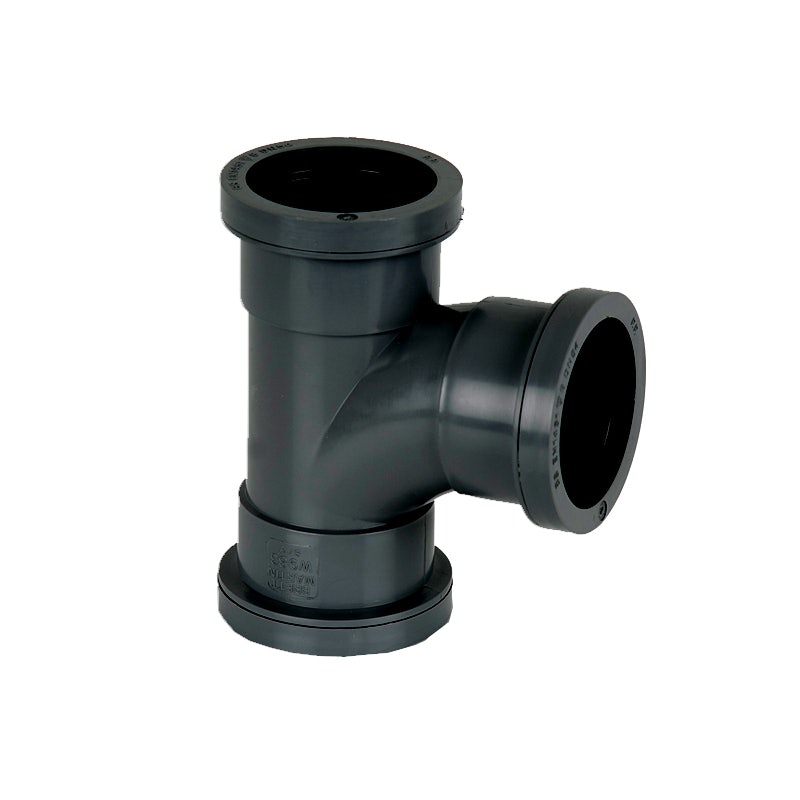
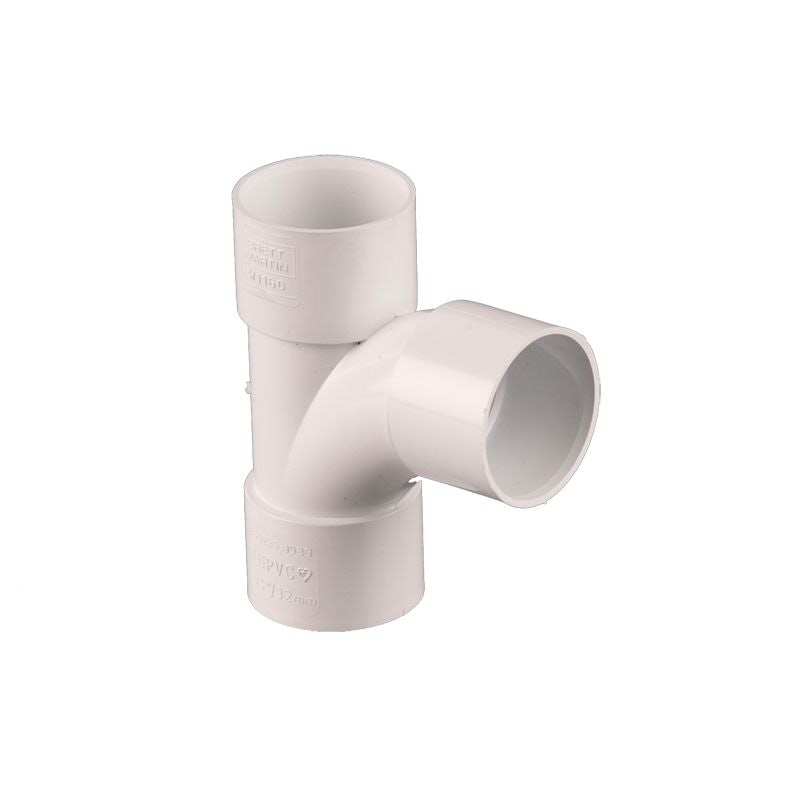
Caps
Caps, as the name suggests, are used to cap off outlets not being used in the system. This is to avoid unnecessary spillage.
Reducers
When connecting pipes of different sizes, it’s important to convert the diameter of the system using a reducer when needed. For example, when converting diameters from 32mm to 40mm, using a reducer can help ensure a better-flowing system.
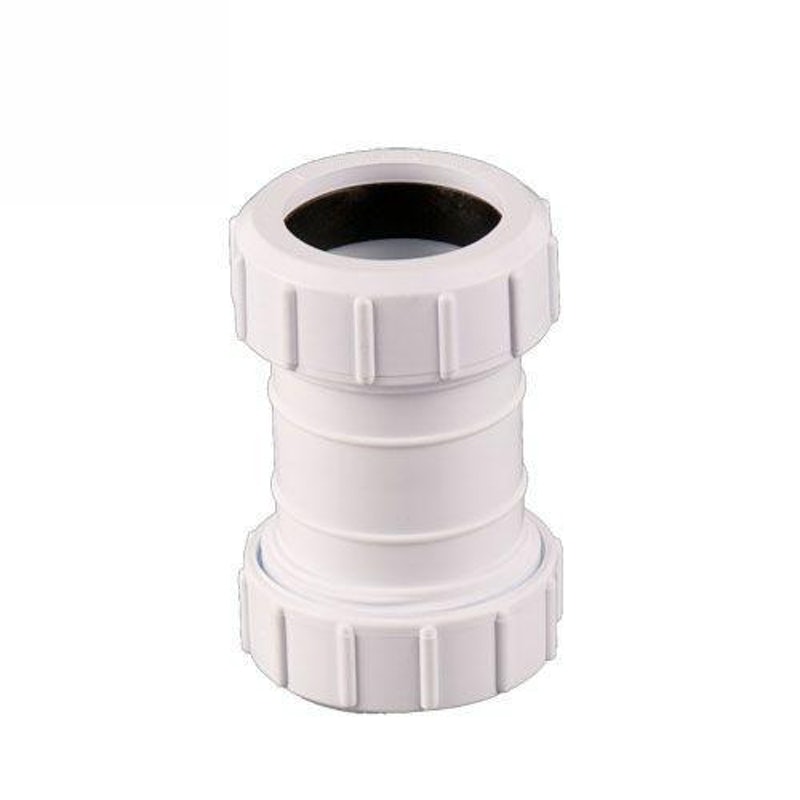
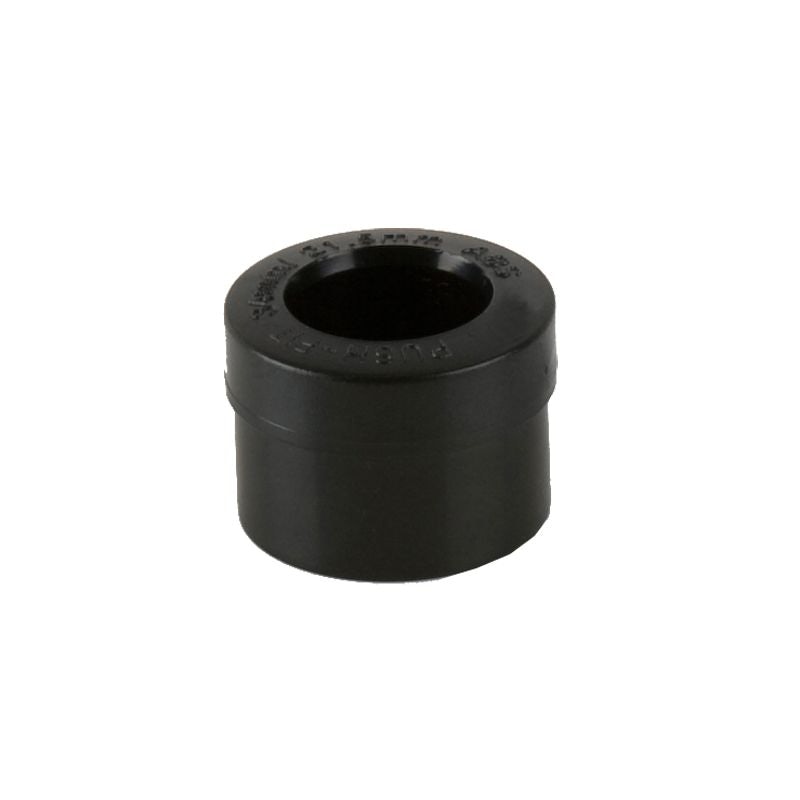
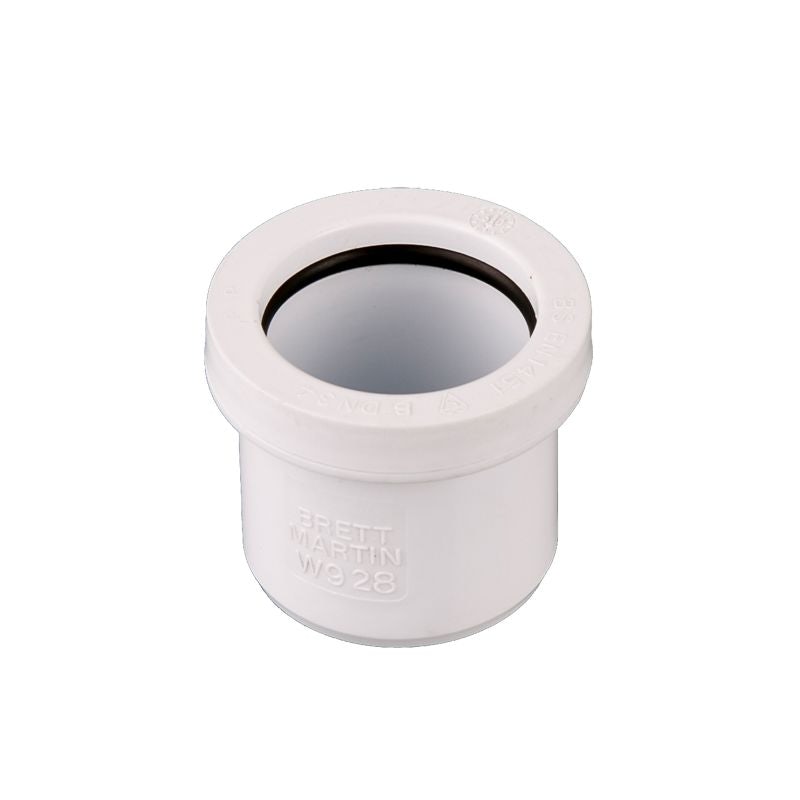
Waste traps
A waste trap is designed to sit beneath the appliances connected to the system. This could be anything from a sink, bathtub, shower or similar appliance that has wastewater. The waste trap will create a water trap that reduces bad smells rising back up through the drain.
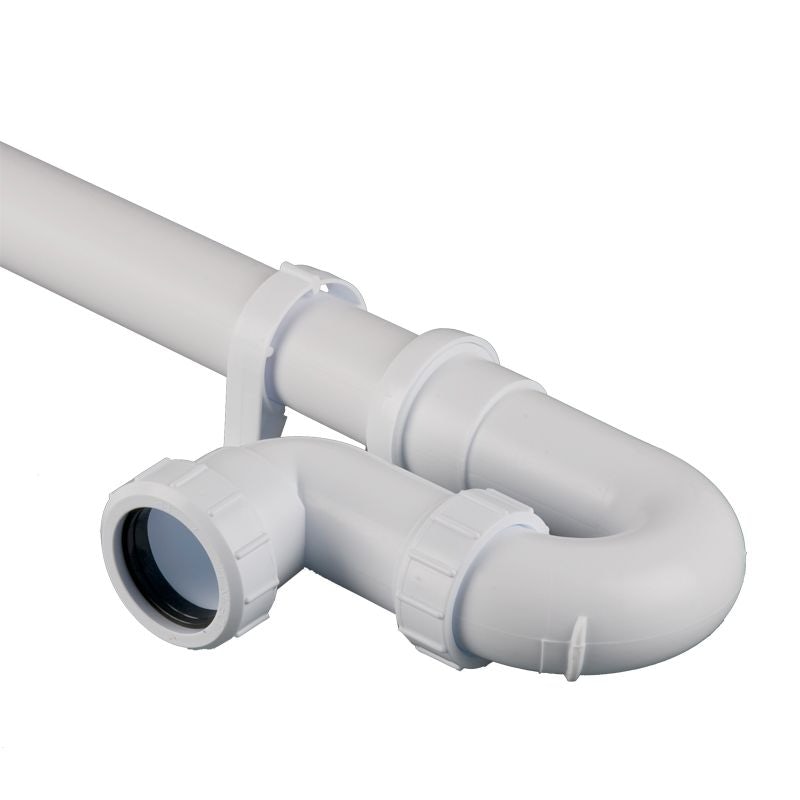
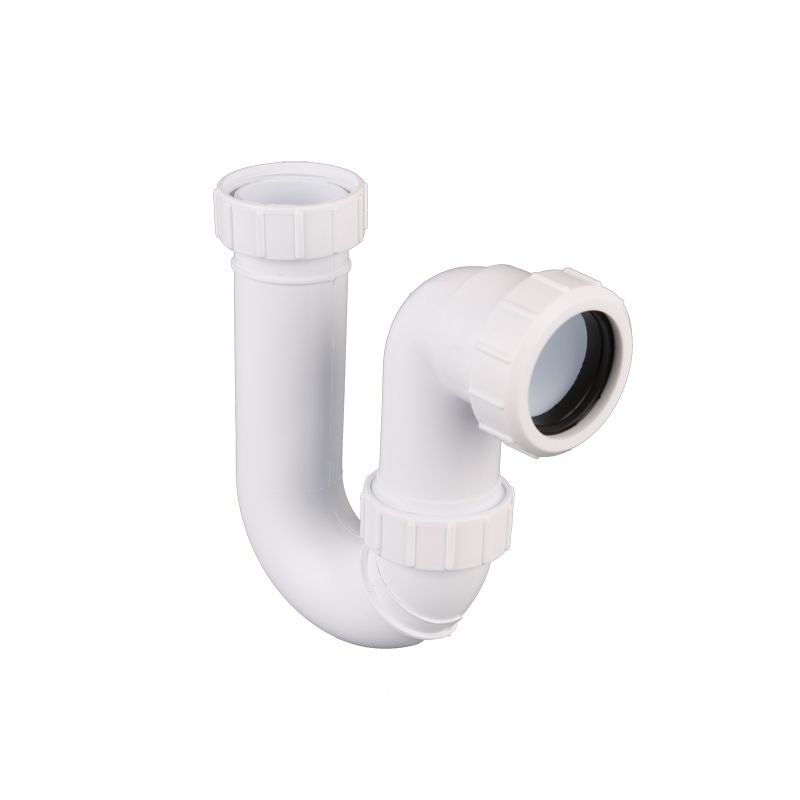
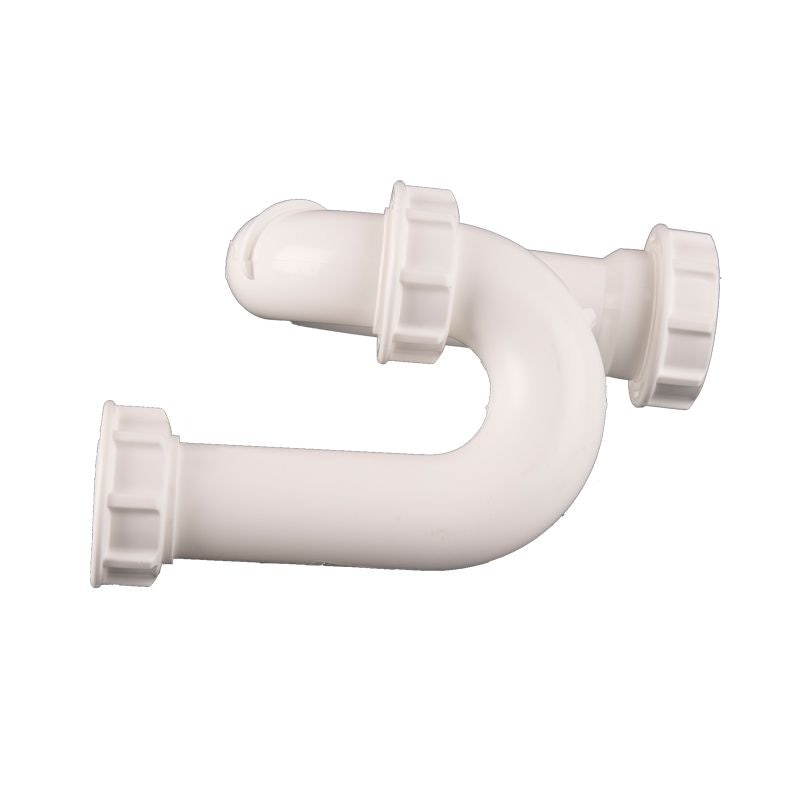
What are waste pipes made of?
Many properties still have waste pipes made of traditional materials like copper, iron or lead. They can either be combined with other materials or manufactured in a singular.
Copper waste pipes
Many waste pipe systems today are still manufactured from copper and are favoured by professionals. This is because of coppers following attributes:
- Flexible material when it comes to fitting it in tight spaces and joint flexibility
- Offers higher resistance to damage caused by vibrations
- Aesthetic appeal
For existing copper piping systems, repairs and additional pipework installations alongside this can be done in many cases. Manufacturers have considered this possibility for many years now and as such can now offer parts that can fit in with the existing system.
Check out our range of plastic waste pipes to see what you can fit into your existing waste pipe system.
Plastic waste pipes
A popular modern alternative is plastic waste pipes for the following attributes:
- Cost-efficient
- Higher resistance to corrosion and impact damage
- Easier to install
- Can perform more quietly when it comes to high pressure and water speeds
What’s the difference between solvent weld and push fit?
If a plastic soil and/or waste system is already in place or you want to install a brand new system, there are two main types of piping you can choose from. Both offer quick-fitting solutions, but here is a brief explanation of the difference between the two:
Push-fit soil and waste pipes
Push-fit is designed to make installation and fitting that much easier. You can typically have these installed with no tools or extra fixings needed, as these systems have a captive ring seal to create watertight joints with enough flexibility to allow for thermal movement. They are also not permanent, meaning they can be easily removed and/or replaced if needed.
Solvent weld soil and waste pipes
Solvent weld, as the name implies, uses solvent cement when fitting two pipes or a pipe and a fitting together. These systems are quick and easy to fit. Simply apply the solvent to the outside of the pipe and the inside of the fitting. Then push the two components together and twist them to ensure a tight fit to form a permanent weld between the two fittings. It is advised you use solvent weld connectors in areas where there’s potential for impact to the system (e.g. on a public building).
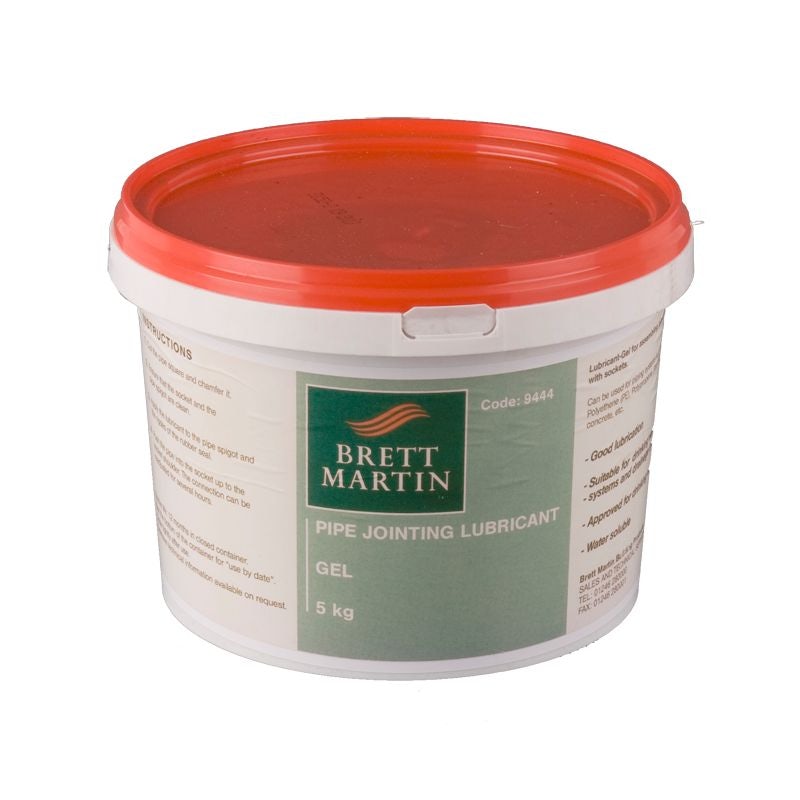
What is the difference between a soil stack and a waste stack?
Soil stacks are larger than waste stacks. This is because soil pipes need to allow for the passage of solids commonly found in soil water.
Common soil pipe dimensions and waste pipe dimensions can be found above via the tables.
Can you connect waste water to a soil pipe?
Indeed! You can use various waste pipe connectors and waste pipe fittings to connect a waste pipe to your soil pipe. One of the simplest and most popular is a strap-on boss. Read on to find out how.
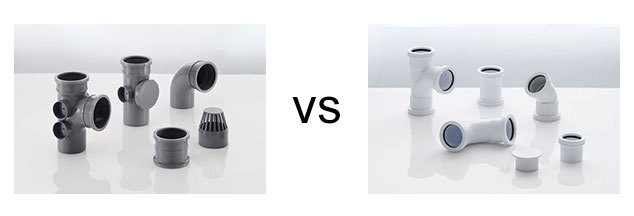
How to connect a toilet to a soil pipe
A toilet pan connector connects the toilet to the soil pipe. Make sure you’ve measured the diameter of your soil pipe before buying a new toilet pan connector. This will ensure you get the appropriate size.
Step one: Before you begin, cover the toilet waste pipe with some cloth or a plastic bag and seal it. This will prevent malodorous gasses from coming up from the sewer.
Step two: Apply some silicone lubricant along the bottom end of the pan connector and fit it securely into the soil pipe. It’s not necessary to use a lubricant to do this, but it will make things a lot easier if you do.
Step three: Once you’ve pushed the toilet connector into place, you can put your toilet back in its location. Then proceed to screw the toilet pan and cistern down. The process will vary depending on the type of toilet.
How to connect a soil pipe to a sewer
The pipe which takes soiled water from your soil pipe to the sewer system is called an underground drain. Connecting to it is a time-consuming project that requires strong DIY and plumbing skills. That’s why it’s typically best left to professions.
To give you a general idea, you’ll have to carefully expose the underground drain with a shovel to avoid damaging it.
Then measure and cut the drain, fit a bend, and add a piece of pipe long enough to reach slightly above concrete level. At this point, you should be able to connect your soil pipe.
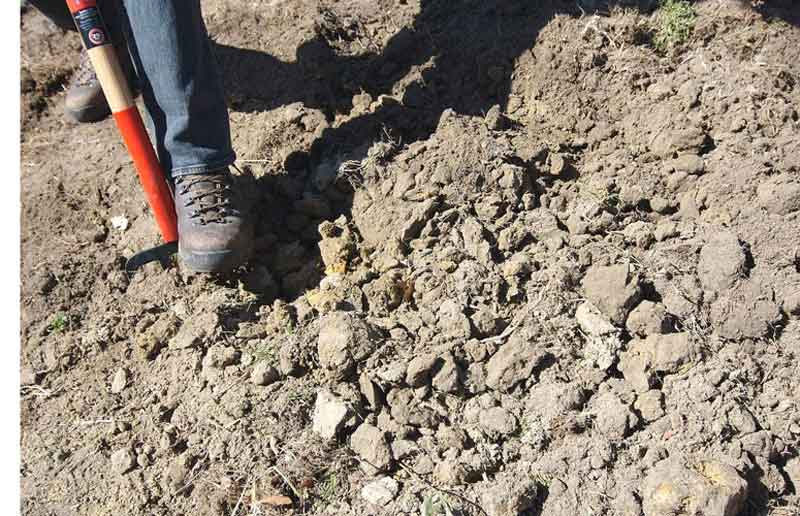
How to unblock a soil pipe
In order to avoid blocked soiled pipes, you shouldn’t put any household items in your toilet.
Some of the most common culprits are:
- Cleaning wipes
- Baby wipes
- Sanitary items
- Nappies
- Cotton buds
- Syringes
- Razors
Still, even the most diligent of us find ourselves having to deal with soil pipe blockage every once in a while. However, there’s no need to worry!
Unless your soil pipe is made of cast iron – in which case it’s best to call a professional engineer – you can fix it yourself without too much hassle. All you need is a drain auger, also known as an electric eel, snake tool or toilet jack.
Here’s how you go about it:
- Find the cleaning eye (an access opening to the interior of the plastic soil pipe).
- Unscrew it and insert the drain auger.
- Pass the drain auger through the pipe until you locate the blockage.
- Crank the handle of the drain auger to release a coiled wire.
- Push and pull the drain auger several times until water begins to flow freely.
- Disinfect the cleaning eye and screw it back into place.
How to disguise an outside soil pipe
Unlike connecting your soil pipe to an underground drain, disguising it is a much more pleasant DIY project. It’s also one where you can let your imagination run wild.
Here are a few tips on how to hide a soil pipe (or any other type of external pipe, for that matter):
- Paint the pipes using a colour that matches that of your external walls.
- Fit pipe covers that complement your landscape design.
- Use plants, such as evergreen cloud cover for horizontal or low vertical pipes, or ivy for higher vertical pipes.
- Industrialise your pipes by adding a contemporary, urban finish.
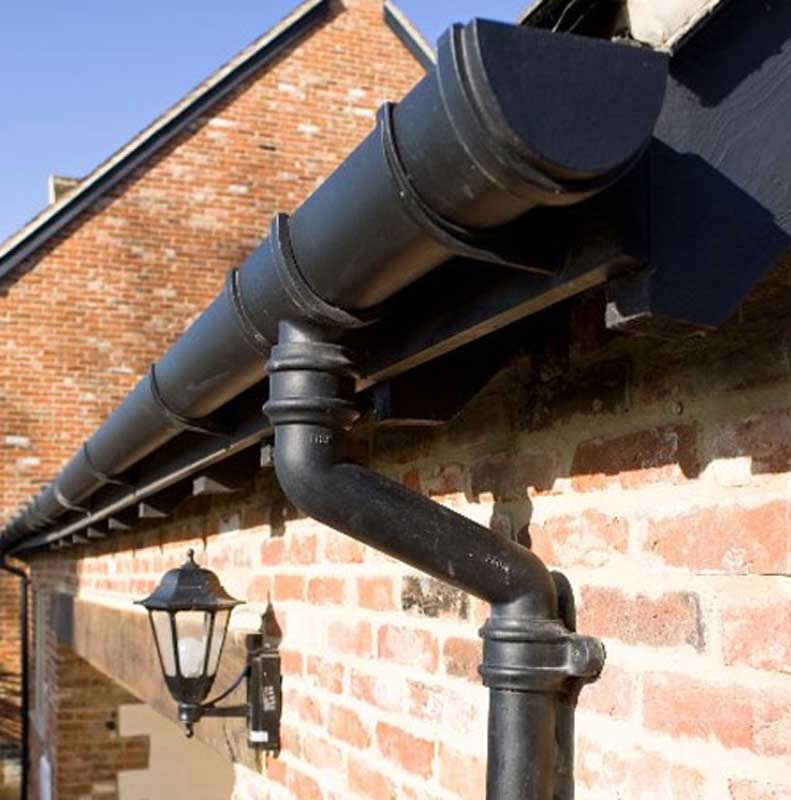
Pipes can be confusing, and it’s not always immediately clear which pipe does what exactly.
That being said:
It’s important to have a basic understanding of the main differences between soil pipes and waste pipes so you can maintain them properly and avoid blockages and other issues. We hope our guide has shed sufficient light on the matter.































